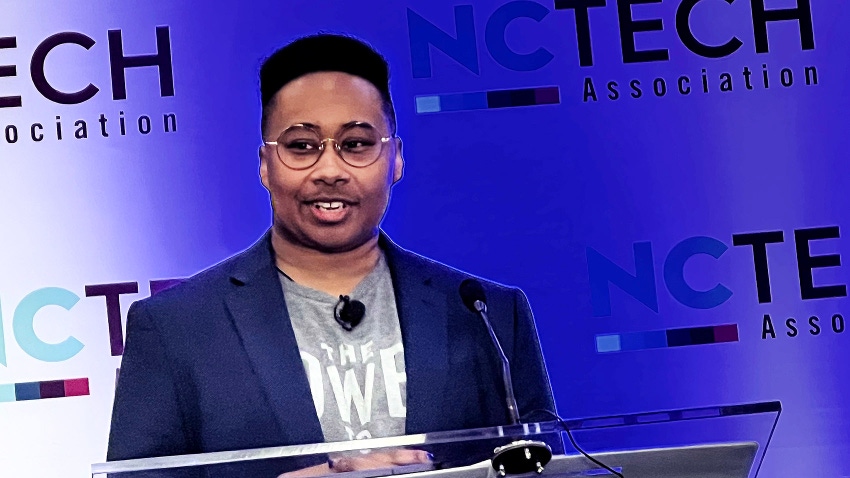

SAS DEI Leader on Building a Culture of Belonging
source link: https://www.informationweek.com/it-leadership/sas-dei-leader-on-building-a-culture-of-belonging
Go to the source link to view the article. You can view the picture content, updated content and better typesetting reading experience. If the link is broken, please click the button below to view the snapshot at that time.
SAS DEI Leader on Building a Culture of Belonging
March 22, 2024

For Bennett McAuley, diversity and inclusion manager at SAS Institute, the company’s DEI efforts boil down to four key components for leaders. He says communication, community, strategy, and trust are all essential to building an organization where people from all backgrounds feel like they belong.
McAuley was one of the keynote speakers featured Thursday at NC Tech’s Diversity and Inclusion in Tech Summit in Durham, North Carolina. He illustrated his talk with a personal story about his experience as a transgender man in college. After being told he couldn’t represent the “Mr. Right” category at a school function, a friend stood up for him. “Because she stood up for me, there was no longer a debate about whether I belonged there,” he says.
It's one thing to talk about creating an inclusive culture, he says. As his friend showed, the real work lies in standing up and being a vocal ally. “It’s one thing to say we have a culture of belonging, it’s another thing to show that,” he says.
Communication and Respect
The first part of the process of creating a true culture of belonging is open communication, McAuley says. “What I mean by this is being open to being vulnerable, being honest, being human -- that includes getting feedback that is going both ways. You should be sourcing feedback from your employees.”
Related:Achieving Diversity: The Role IT Plays in DEI Recruiting
Communication can be as personal as you and the employee are comfortable with, but managers shouldn’t shy away from meaningful conversations. “If you know that they’re doing a good job, tell them and if there are ways they can improve, tell them. You don’t have to know all the details of your employee’s life, but even if we are in the workplace, I don’t stop being a black man … I’m still impacted. You’re keeping those personal investments in mind.”
Community Beyond Pizza
Building a community is about the relationships between colleagues and between business units, McAuley says. “I know some (managers) who say, ‘All right, a pizza party will get people motivated. It’s a pizza. Nothing substantial comes from that … When we say community, we mean collaborating across teams, building intentional socialization and dialogues.”
He says a better tactic to build community would be to create “inclusion groups,” with large portions of the workforce “where they can learn about different aspects of culture and identity from each other. When you do that, you have a higher sense of synergy. People will feel like they know each other, that they can put themselves in each other’s shoes. And it makes for a much more authentic environment to work.”
Related:Quick Study: Diversity, Equity, and Inclusion
Strategy is Louder Than Words
Having a strategy is more than about vocalizing desires for a more diverse and inclusive workplace.
“It’s not enough just to say we want a more inclusive world,” McAuley says. “Cool. But if you don’t have what your goal is in mind, then you’re not going to be able to build a strategy. At SAS, one of our goals in the past was to ensure we have more diverse talent across the organization. That’s a tangible goal.”
Achieving the goal of a more diverse workforce can start with discussions with talent acquisitions partners, asking where they are recruiting from, how they approach hiring, and how they attract underrepresented talent. “It’s good to build that business case.”
Trust and Feeling
Building trust happens through action, McAuley says. “Trust is kind of what brings us all together. It’s being transparent. It’s showing up. It’s acting with integrity. It’s one thing to promise a lot, but it makes a difference to actually show up. It’s showing up for your employees if they’re having a tough time and that you’re able to support them and that you can help them when they need help.”
He ended the keynote with a quote from the late poet Maya Angelou: “I’ve learned that people will forget what you said, people will forget what you did, but people will never forget how you made them feel.”
Recommend
About Joyk
Aggregate valuable and interesting links.
Joyk means Joy of geeK